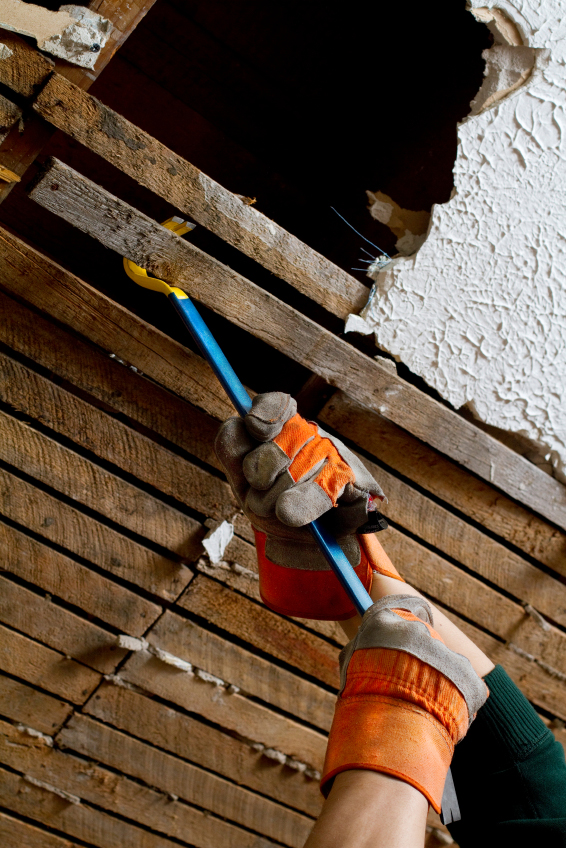Drywall Mechanics and Mesothelioma
Mesothelioma Hits Drywall Mechanics After Asbestos Exposure
You hang or finish sheetrock for a living. As a result you probably come into contact with a lot of asbestos.
In fact, you probably come home at the end of your workday covered with it from head to toe.
Now you have mesothelioma. Or have a moderate to high risk of getting it.
The disease casts a shadow over you because drywall products manufactured before the 1980s commonly contained toxic asbestos. Among these products are:
- Wallboard
- Joint tape
- Joint compound
Drywall was introduced just before the U.S. entered World War I. Not until about 30 years later did it catch on among builders.
Prior to then, the most common method of making interior walls entailed spreading plaster over lath boards. This was slow and expensive. But that was OK because houses were built one at a time.
Then the post-World War II housing boom arrived. Houses were instead built one neighborhood or tract at a time.
As a result, contractors needed a way to put up walls faster and less expensively. They discovered that drywall was perfect for the job.
Added Asbestos to Drywall

The danger arose the minute a new panel was cut to a desired dimension. The dust produced by the cut contained a mix of gypsum and asbestos.
Of course, the biggest dust-generating part of drywalling is the mud sanding. In the old days, asbestos was routinely added to joint compound.
Applied wet, it posed no danger unless you swallowed some of it. The danger skyrocketed once it dried and you began bringing it down with your sander.
Drywall panels and mud no longer are made with asbestos. The danger comes now when you remove drywall that was made during the era of asbestos additives.
The most cost-efficient and easiest way to remove old drywall is not to unscrew it. It is to use a sledgehammer or wrecking bar.
Unfortunately, that method kicks up a great amount of asbestos-containing dust.
Asbestos Inhaled Stays in Your Lungs
Drywall was bad enough. But in the structures where you worked there were many other asbestos-containing materials used by other trades.
There were plumbing, electrical systems, window frames, flooring, roofing, fireplaces, furnaces, patio concrete, bricks, insulation and paint. They all contained asbestos if they were made before the 1970s.
Sawing, hammering, drilling, screwing, sanding and other actions to install or remove these materials or products could disturb the asbestos within and release it into the air.
Once in the air, you were at risk of taking the asbestos into your lungs. Asbestos you inhaled while drywalling a house in 1970 is still inside your lungs today.
That should trouble you. The reason is that asbestos in your lungs causes mesothelioma. It’s not guaranteed to happen. But, if it does happen, it will be because of the asbestos you breathed in.
Union Urges Asbestos Safety
The United Brotherhood of Carpenters and Joiners of America is the union to which many drywall mechanics and finishers belong. It has more than 400,000 members.
The UBC offers programs that feature invaluable information about asbestos risks and how to reduce or altogether avoid them.
A message of the UBC programs and others like it is to use a full-face respirator when working with drywall.
Another way to reduce the risk of inhaling construction and debris dust is to mist your work area and keep it damp or wet. Then, frequently use a HEPA-rated shop vacuum to suction drywall waste.
If you have health insurance through the UBC or by other arrangements, make use of it right away. Have yourself checked right away by a doctor who specializes in treating mesothelioma.
True, this disease takes what seems like forever to strike. But after that, it hits hard and fast.
Drywall mechanics have died of it quicker than it takes to hang sheetrock in a 2,500-square-foot home, so don’t put off seeing that doctor.
